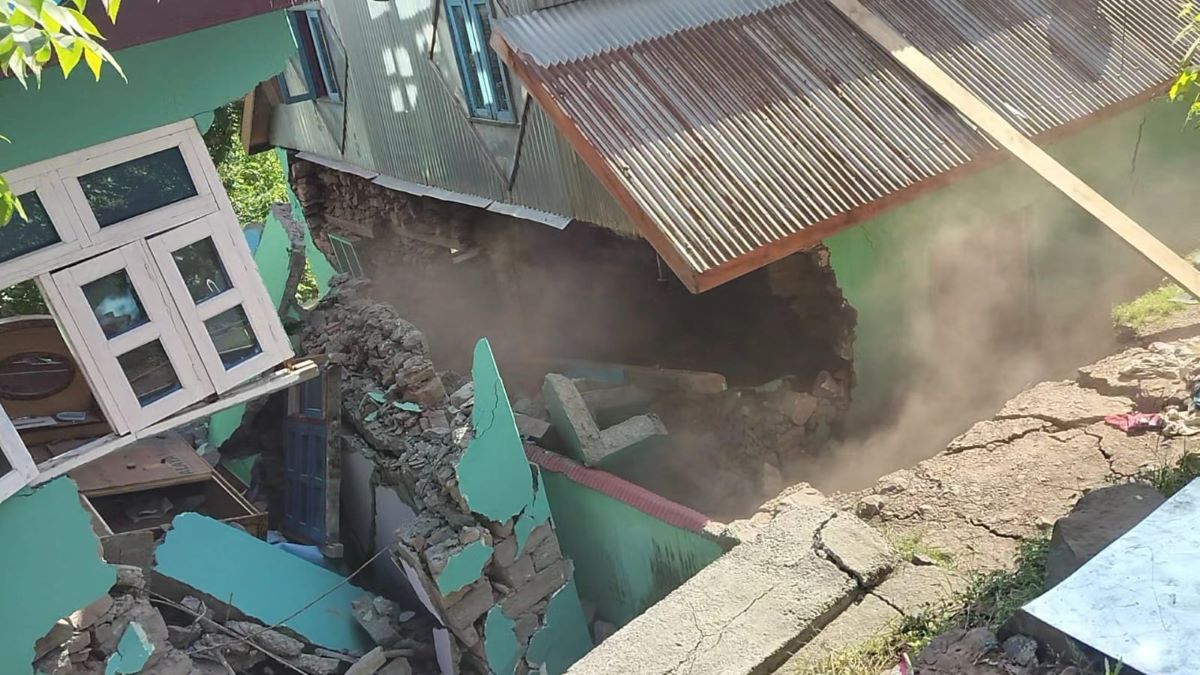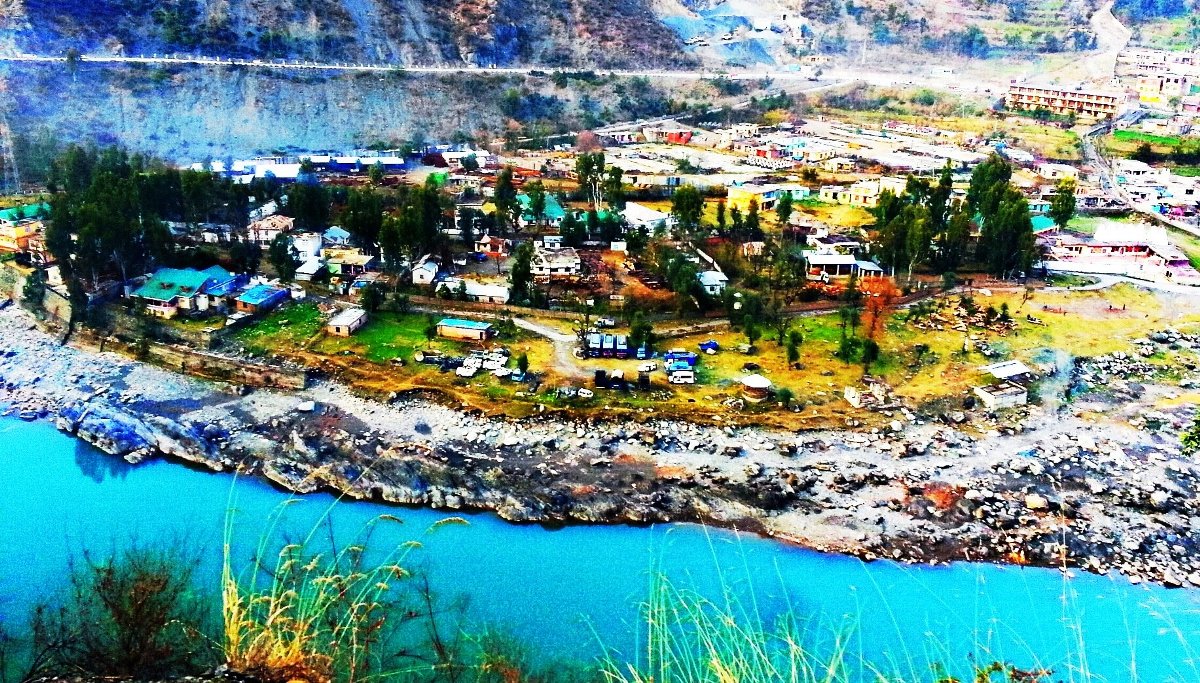by Masood Hussain
SRINAGAR: The ongoing land subsidence, which has erased the Pernote village of Ramban, has critically hit the power transmission set-up of Kashmir. Of the four lines that wheel energy, one has collapsed and three have been switched off to evade damage to life and property.

“Four towers of the 400-kV PGCIL transmission line have collapsed including a local receiving station,” officials privy to the developments said. “The other three lines have been switched off though the vibrations are going on and there is a possibility that their bases may also erode.”
In the distribution sector, the land sinking has caused damage to one 33/11 kV Receiving Station at Kanga in Ramban, as well as the 33 kV line feeding the Sangaldan and Gool Receiving Stations.
Kashmir’s entire power transmission was passing through the belt that is facing a crisis right now. It included the PGCIL-owned double circuit 400-kV line, the Jammu and Kashmir Power Transmission Corporation (JKPTCL) owned double-circuit 400-kV line and a double circuit 220-kV line. AS one suffered damage, all others are not in operation. These lines could be charged up to 2500 MWs and were used to wheel energy to and fro.
This has created problems for the NHPC in taking the power out from Uri and Kishanganga as a result of which all energy is going to the local pool. “Right now, we have a local generation of around 850-MWs including from two NHPC projects that are unable to take the energy out and some 300-400 are being supplied through the line that follows the Mughal Road,” one expert who has the information about the current situation said.

As the traditional transmission set-up was closed, the alternative 400 kV double-circuit extra high voltage (EHV) transmission line, laid through the Mughal Road from GSS Samba in Jammu to Amargarh in Kashmir, is the main fall-back system. This, however, is hugely underused as not much energy is shelling into Kashmir.
Informed sources said against the availability of around 1800 MWs, the power department is not making available anything beyond 1300 MWs. This is the main reason why Kashmir is in pitched dark for most of the days.
The Pernot area, it may be recalled here, started sinking on Friday after incessant rains for many days. The road to Gool is completely disrupted and people inhabiting the belt have been helped to move out.
Nearly 60 houses have caved in, some with entire household items that they had. In one case a car has been devoured by the space it was parked at. The residents said they had saved their herds only.
Officials said they have helped almost 500 people move to safer places, mostly to the Ramban town. Right now, the SDRF, NDRF, police and volunteers from a local NGO, QRT, are helping people to save any household item that they can lay their hands on.
“Our homes were taken as they were card houses, almost in minutes,” one resident told reporters in the camp where he has succeeded in getting his wife and kids. “My daughter’s school bag is also lost.” Though only 60 houses were directly hit by the ongoing disaster, authorities have evacuated all the others.
The scenes are grim on the spot. One house had collapsed and got into another house and now both mangled homes are getting downhill, inch by inch. The entire pine forest is coming down in pieces and getting devoured.
The rescue teams have raised barriers to prevent the unnecessary entry of the “disaster tourists” into the area. Cops and civil administration officials are camping around to explore ways and means of helping the people, if any. Reports said the land is sinking gradually, surely and the process has not stopped at all. Earlier, the government drove some experts to collect samples and report – a ritual the government has been following for years.
The entire Pir Panchal range which is the main universe for development in Jammu and Kashmir is used to giving up at a colossal cost for the inhabitants. The young mountain range is witnessing massive intervention in railways, road and hydroelectric projects. Off late, it is reporting more earthquakes than any other place across Jammu and Kashmir. Pernote village is appearing just as a new address of erasure and is unlikely to be the lost one.















